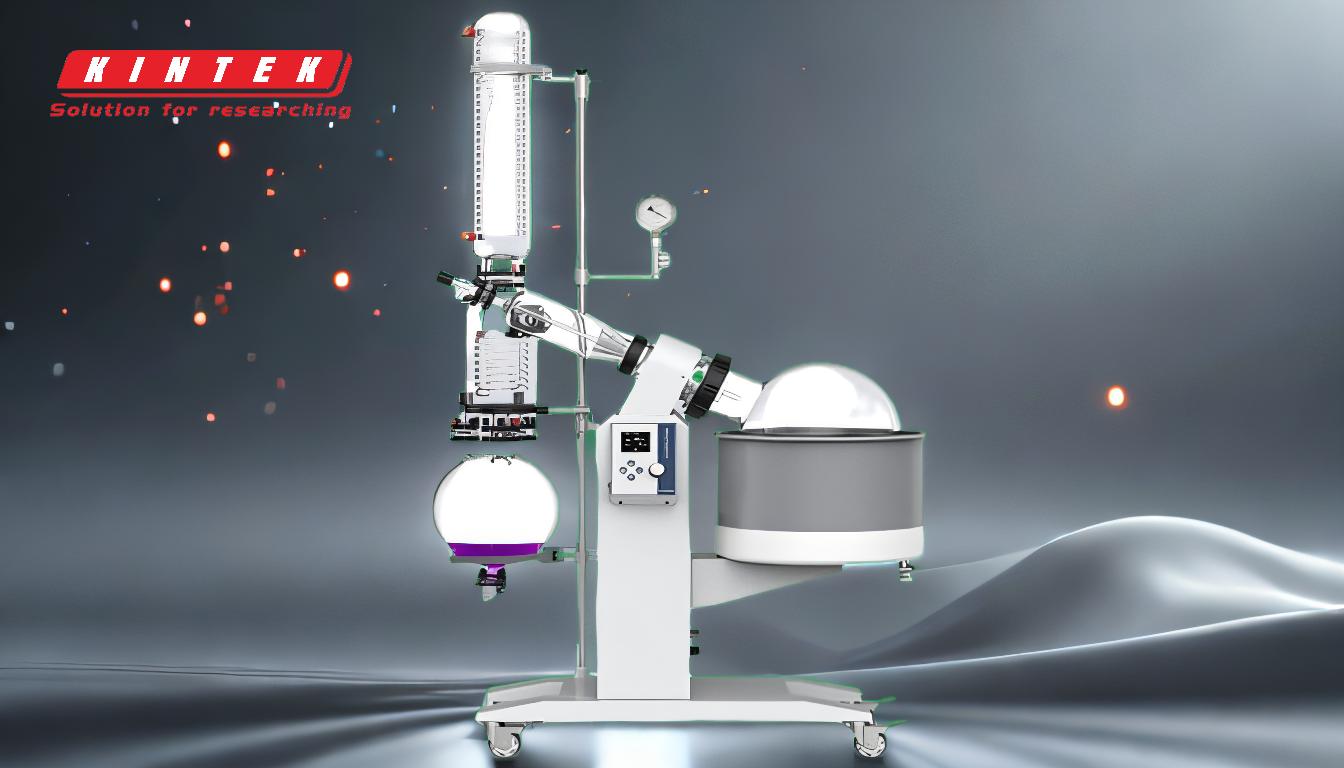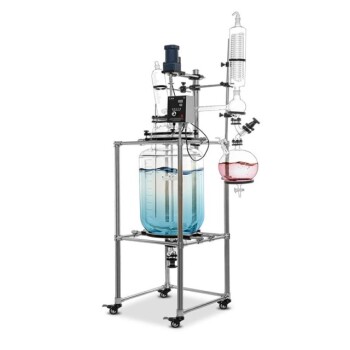A jacketed stirred tank reactor is a specialized vessel used in chemical and industrial processes to control the temperature of reactions while ensuring efficient mixing of the contents. It consists of a reactor vessel surrounded by a jacket, which circulates heating or cooling media to regulate the internal temperature. Stirring mechanisms, such as impellers or agitators, ensure uniform mixing, while features like baffles and thermocouples enhance process control. Jacketed reactors can be single or double-jacketed, with the latter providing additional insulation for precise temperature management. These reactors are widely used for scaling up reactions, improving yield, and maintaining consistent product quality.
Key Points Explained:

-
Definition and Purpose of a Jacketed Stirred Tank Reactor:
- A jacketed stirred tank reactor is a vessel designed for chemical reactions that require precise temperature control and efficient mixing.
- The jacket surrounding the reactor allows for the circulation of heating or cooling media (e.g., water, oil) to regulate the internal temperature.
- Stirring mechanisms, such as impellers or agitators, ensure uniform mixing of the reaction contents, which is critical for consistent results.
-
Components and Design Features:
-
Jacket: The jacket encircles the reactor and is used to circulate heating or cooling media. It can be single or double-jacketed:
- Single jacket: Circulates liquid for temperature control.
- Double jacket: Includes an inner jacket for liquid circulation and an outer jacket for vacuum insulation, minimizing heat loss and maintaining precise temperatures.
- Stirring Mechanism: Equipped with a variable-speed stirrer and baffles to maintain movement and prevent stagnation of the vessel's contents.
- Temperature Monitoring: Thermocouples are placed at strategic points to monitor and control the temperature.
- Customization: Reactors can be customized based on capacity, process requirements, and additional features like quick-release connections for heating/cooling media.
-
Jacket: The jacket encircles the reactor and is used to circulate heating or cooling media. It can be single or double-jacketed:
-
Working Principle:
- The jacket is filled with a heating or cooling medium, which is circulated using a pump.
- By regulating the temperature of this medium, the temperature inside the reactor is precisely controlled.
- The jacket also provides insulation, preventing heat loss or gain and ensuring consistent reaction conditions.
- Stirring ensures uniform mixing, which is essential for efficient heat transfer and reaction homogeneity.
-
Types of Jacketed Reactors:
- Single Jacketed Reactors: Suitable for basic temperature control applications.
- Double Jacketed Reactors (Triple Wall Reactors): Feature an additional vacuum-sealed jacket for enhanced insulation, ideal for cryogenic reactions or processes requiring minimal heat loss.
-
Applications and Benefits:
- Scalability: Enables scientists and engineers to scale up reactions from lab-scale to industrial-scale processes.
- Improved Yield: Precise temperature control and efficient mixing lead to higher yields and better product quality.
- Versatility: Can be used for a wide range of chemical processes, including synthesis, crystallization, and polymerization.
- Reliability: Provides consistent and reproducible results, making it a preferred choice for industrial applications.
-
Advantages of Jacketed Stirred Tank Reactors:
- Enhanced Temperature Control: The jacket ensures uniform heat exchange, maintaining the desired reaction temperature.
- Efficient Mixing: Stirring mechanisms prevent localized hot or cold spots, ensuring homogeneous reactions.
- Insulation: Double jackets minimize heat loss, making them suitable for extreme temperature conditions.
- Visibility: In glass reactors, the transparent design allows for visual monitoring of the reaction process.
-
Considerations for Purchasers:
- Material Compatibility: Ensure the reactor and jacket materials are compatible with the chemicals and temperatures involved in the process.
- Capacity and Customization: Choose a reactor size and design that meets the specific requirements of the application.
- Accessories: Consider additional features like thermocouples, baffles, and quick-release connections for enhanced functionality.
- Maintenance and Cleaning: Opt for designs that facilitate easy cleaning and maintenance to ensure long-term reliability.
By understanding these key points, purchasers can make informed decisions when selecting a jacketed stirred tank reactor for their specific needs, ensuring optimal performance and efficiency in their processes.
Summary Table:
| Feature | Description |
|---|---|
| Purpose | Controls temperature and ensures uniform mixing for chemical reactions. |
| Jacket Types | Single jacket (basic) or double jacket (enhanced insulation). |
| Stirring Mechanism | Impellers or agitators with baffles for efficient mixing. |
| Temperature Control | Heating/cooling media circulated via jacket; thermocouples for monitoring. |
| Applications | Synthesis, crystallization, polymerization, and scalable industrial processes. |
| Advantages | Precise temperature control, improved yield, and reliable performance. |
| Considerations | Material compatibility, capacity, customization, and maintenance ease. |
Looking for a jacketed stirred tank reactor tailored to your needs? Contact us today to learn more!










